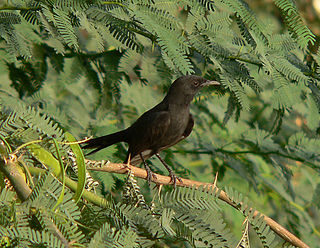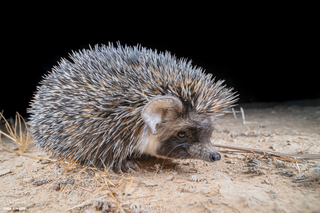
The Cooperation Council for the Arab States of the Gulf, also known as the Gulf Cooperation Council, is a regional, intergovernmental, political, and economic union comprising Bahrain, Kuwait, Oman, Qatar, Saudi Arabia, and the United Arab Emirates. The council's main headquarters is located in Riyadh, the capital of Saudi Arabia. The Charter of the GCC was signed on 25 May 1981, formally establishing the institution.

The Middle East and North Africa is a geographic region whose countries are often referred to by the acronym MENA. It is also known as WANA, SWANA, or NAWA, which alternatively refers to the Middle East as West Asia or as Southwest Asia; this is another way to reference the geographical region, instead of using the more common political terminology.

Arab League–Iran relations refer to the political, economic, and cultural ties between the League of Arab States and the Islamic Republic of Iran. The former is a regional organization composed of 22 Arab states in MENA with a combined majority of Sunni Muslims, whereas the latter is a country in Western Asia with a majority of Shia Muslims.

Human rights in the Middle East have been shaped by the legal and political development of international human rights law after the Second World War, and their application to the Middle East. The 2004 United Nations Arab Human Development Report (AHDR) claimed that although Arab-Islamic tradition does hold unique importance for ideas of human welfare, History has proven that "they were not sufficiently prevalent in society to foster a culture based on a political contract, and allow for the legitimacy of differences of opinion, dialogue and transfer of power." Issues of the validity of democracy in the region and human rights are at the very centre of the challenges facing Middle Eastern society today.

The black scrub robin is a species of bird in the family Muscicapidae. It is found in Bahrain, Burkina Faso, Cameroon, Chad, Djibouti, Egypt, Eritrea, Ethiopia, Guinea-Bissau, Israel, Jordan, Mali, Mauritania, Niger, Nigeria, Oman, Saudi Arabia, Senegal, Somalia, Sudan, United Arab Emirates, and Yemen. Its natural habitat is dry savanna.

The desert hedgehog is a species of mammal in the family Erinaceidae.

Mormogystia reibellii is a moth in the family Cossidae. It is found in North Africa and the northern part of the Arabian Peninsula, including the northern part of Saudi Arabia, northern Oman, the United Arab Emirates, Israel, Egypt, Algeria, Libya, Tunisia, Mauritania, Niger and Chad.
Meharia semilactea is a moth in the family Cossidae. It is found in Israel, Jordan, Saudi Arabia, Oman, the United Arab Emirates, Yemen, Egypt, northern Sudan, Morocco and Mauritania.
Paropta paradoxus is a species of moth of the family Cossidae. It is found on Cyprus and Rhodes and in Lebanon, Syria, Egypt, Saudi Arabia, Israel, Iran and Jordan.
Semitocossus johannes is a species of moth of the family Cossidae. It is found in Israel, Jordan, south-western Turkey and Saudi Arabia.
Holcocerus gloriosus is a species of moth of the family Cossidae. It is found in Turkmenistan, Uzbekistan, southern Kazakhstan, Iran, Afghanistan, Iraq, Jordan, Israel, northern Egypt, Saudi Arabia, Bahrain and Oman. The habitat consists of deserts.
Eremocossus vaulogeri is a species of moth of the family Cossidae. It is found in Senegal, Mauritania, Morocco, Algeria, Libya, Tunisia, Egypt, Jordan, Israel, Syria, Egypt, Oman, Yemen, the United Arab Emirates, Saudi Arabia, Iraq and southern Iran.
Dyspessa kabylaria is a species of moth of the family Cossidae. It is found in Iran, Israel, Jordan, Tunisia, Algeria, Egypt and Saudi Arabia.

Iran and Saudi Arabia are engaged in an ongoing struggle for influence in the Middle East and other regions of the Muslim world. The two countries have provided varying degrees of support to opposing sides in nearby conflicts, including the civil wars in Syria and Yemen; and disputes in Bahrain, Lebanon, Qatar, and Iraq. The struggle also extends to disputes or broader competition in other countries globally including in West, North and East Africa, South, Central, Southeast Asia, the Balkans, and the Caucasus.

The Qatar–Saudi Arabia diplomatic conflict refers to the ongoing struggle for regional influence between Qatar and the Kingdom of Saudi Arabia (KSA), both of which are members of the Gulf Cooperation Council (GCC). It is sometimes called the New Arab Cold War. Bilateral relations are especially strained since the beginning of the Arab Spring, that left a power vacuum both states sought to fill, with Qatar being supportive of the revolutionary wave and Saudi Arabia opposing it. Both states are allies of the United States, and have avoided direct conflict with one another.

Saudi Arabia–Palestine relations refers to the bilateral relationship between the Kingdom of Saudi Arabia and the State of Palestine.
The Arab–Israeli alliance, sometimes called the Israeli–Sunni alliance, refers to an unofficial security coalition comprising Israel and various Arab countries. Formed in the interest of the Gulf Cooperation Council, it is primarily focused on deterring the political and military ambitions of Iran, and has been actively promoted by the United States since the February 2019 Warsaw conference.










